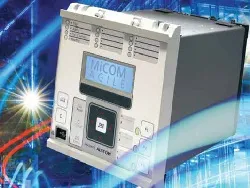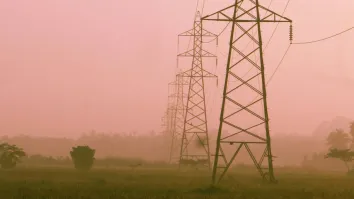
Using transmission protection technology in distribution relays
As the development of ‘micro-grids’ indicates a need for improved distribution system technologies, Alstom Grid provides a solution.
MiCOM P40 Agile, Alstom Grid’s recent offering in its substation automation solution range, lives up to its name as the well-known MiCOM P40’s smaller, lighter ‘sibling.’ Alstom Grid recognises the mission critical status of substation automation technologies and continues to adapt leading edge transmission technologies for distribution systems and industry.
There has been increasing pressure on energy operators from governments and environmental groups to improve system efficiency while also ensuring reliable supply. As more and more operating companies worldwide embrace the concept of the Smart Grid, and offer consumers access to flexible energy supply agreements, the composition of distribution systems will change. One expected change is the development of ‘micro-grids’ defined as interconnected loads and distributed energy resources acting as integrated systems and operating in parallel with the main grid or in islanded mode.
Certain generic features, such as programmable scheme logic and supervision functions that have until now primarily been used in transmission systems, are already being sought at medium voltages. It may seem fairly simple to use existing transmission protection relays in distribution systems, but it is necessary to consider the possible limitations - alongside the benefits - of transmission protection technologies when applied to distribution systems.
Programmable scheme logic
Programmable scheme logic is a transmission protection technology that enables relay users to configure individual protection schemes to suit their unique application. This extremely flexible system, based on programmable logic gates and delay timers, allows users to create their own scheme logic design no matter how complex. The inherent flexibility of programmable scheme logic makes it a technology with obvious applications for distribution systems and - when built into distribution relays - improves power reliability and quality.
Supervisory functions
As distribution systems take on a more critical status, it is vital that a greater degree of supervision is built into secondary devices to enable earlier triggers for predictive maintenance. Some supervisory functions already in use in transmission systems such as supply supervision, condition monitoring and trip circuit supervision can be set in a distribution relay.
Programmable scheme logic can also be used effectively in this context. A voltage transformer supervision (VTS) feature is used to detect failure of alternating current voltage inputs to the relay. VTS logic in the relay is designed to detect voltage failure and automatically adjust the configuration of protection elements whose stability would be at risk.
Communication infrastructure
Distribution systems are becoming smarter and, accordingly, they need a communications infrastructure that is strong and reliable. Serial-based communications protocols such as Modbus can be augmented by more modern communication protocols such as the Ethernet-based IEC61850 to ensure protection relays can feed as much information as possible through the communications infrastructure. It is essential to provide options to suit project requirements, while maintaining the same interface to staff.
Circuit breaker fail protection
Programmable scheme logic can be used once more, in this instance, to develop simple circuit breaker. Incorporating transmission protection technologies such as circuit breaker fail protection in distribution relays has several benefits including the enabling of predictive maintenance and ‘self healing’ responses to system disturbances.
Increased availability of highly integrated relays
It is possible to increase the availability and effectiveness of a single protection. The increased availability can be achieved by developing the self-diagnostic features within the relay.
These self-diagnostic features can include the relay detecting software-related fatal errors and subsequently performing a restart of the relevant process without having to reboot the entire device. This results in full product operational status being regained within a few power system cycles; a shorter time period than the seconds it would take to reboot.
Conclusion
The incorporation of existing transmission protection technologies into distribution relays can reap a myriad of benefits. There may be constraints, however, such as cost, size and withdraw ability. Alstom Grid’s MiCOM P40 Agile has, as its name implies, the inbuilt flexibility and technological sophistication to overcome these constraints and more, and to successfully bridge the gap between transmission and distribution relay technologies.
For more information, contact Soon-Wi Lee at +65 9231 2770 or [email protected]



















 Advertise
Advertise








